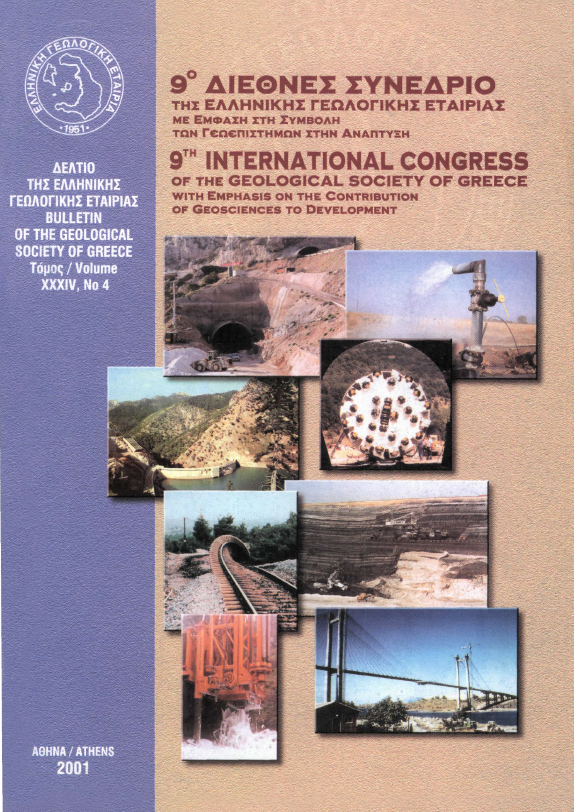Α 3-D Model the morphological evolution of a mountain, as a result of fluvial processes
Résumé
In the present paper, we study the morphological evolution of a hill or mountain, caused by erosion. The mountain, in its initial state, is simulated by a vertical cylinder, with basis radius r0 and the erosion is assumed to be caused by a thin water layer flow. Firstly, the differential equation of the erosion process is formulated, assuming that the eroded mass flow is proportional to the hill slope. The differential equation is of the diffusion type and contains a coefficient d, which may be called "erosion coefficient" and its magnitude depends on the type and cohesion of the soil, as well as the friction between soil carrying water flow and the ground. The solution of the differential equation is expressed as an integral, which gives the height y for a distance r from the origin at time t. The integral is numerically calculated and various profiles of the mountainous relief for different time instants are plotted. As expected, the height of the top of the mountain and the slope are reduced with time. Compared to the two-dimensional model of a rectangular hill, the reduction rate is higher in the three-dimensional case. This means that the evolution of a hill or a mountain, with limited horizontal dimensions, is quicker than that of a mountain range of a much greater length. A closed analytical expression for the variation of the height of the top of the hill with time is then deduced and compared with an empirical formula proposed by Strahler 1952. The theoretical predictions agree with this formula in qualitative terms only, since the former gives a slower time variation than the latter. Finally, it is pointed out that the rate of morphological evolution depends on the ratio r^d, increasing when τ Ja decreases. A graphical plot of the speed of time variation of the height of the hill against r^d is made, to show this dependence. The results and conclusions of this paper may help in understanding certain aspects of the process by which the relief of an area changes with time. They may also orient field and laboratory investigations towards testing the theoretical predictions and to the study of the influence of certain factors on the morphological evolution of a mountainous region
Article Details
- Comment citer
-
ΒΑΪΟΠΟΥΛΟΣ Δ., ΣΚΙΑΝΗΣ Γ. Α., ΤΣΑΡΜΠΟΣ Β., & ΣΑΜΠΩ Β. (2001). Α 3-D Model the morphological evolution of a mountain, as a result of fluvial processes. Bulletin of the Geological Society of Greece, 34(1), 363–370. https://doi.org/10.12681/bgsg.17035
- Rubrique
- Neotectonics and Geomorphology

Ce travail est disponible sous licence Creative Commons Attribution - Pas d’Utilisation Commerciale 4.0 International.
Authors who publish with this journal agree to the following terms:
Authors retain copyright and grant the journal right of first publication with the work simultaneously licensed under a Creative Commons Attribution Non-Commercial License that allows others to share the work with an acknowledgement of the work's authorship and initial publication in this journal.
Authors are able to enter into separate, additional contractual arrangements for the non-exclusive distribution of the journal's published version of the work (e.g. post it to an institutional repository or publish it in a book), with an acknowledgement of its initial publication in this journal. Authors are permitted and encouraged to post their work online (preferably in institutional repositories or on their website) prior to and during the submission process, as it can lead to productive exchanges, as well as earlier and greater citation of published work.





